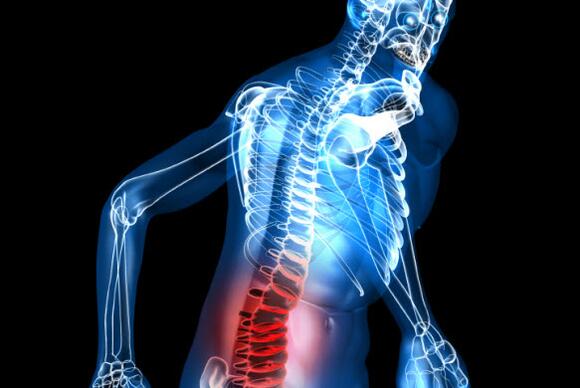1. Hovis Soft White Medium Bread, 800g.
Each slice (40g) contains:
- 93 calories (5% of your calorie intake for the day)
- 0.7g of fat (1% of your fat intake for the day)
- 17.9g of carbohydrate (7% of your carbohydrate intake for the day)
- 1.4g of sugars (2% of your sugar intake for the day)
- 1g of fibre
- 3.5g of protein (7% of your protein intake for the day)
- 0.36g of salt (6% of your salt intake for the day)
2. Warburtons Toastie Sliced White Bread, 800g.
Each slice contains:
- 113 calories (6%)
- 0.9g of a fat (1%)
- 20.8g of carbohydrate (8%)
- 1g of sugar (1%)
- 1.2g of fibre
- 4.7g of protein (9%)
- 0.47g of salt (8%)
3. Hovis Soft White Thick Bread, 800g.
Each slice contains:
- 117 calories (6%)
- 0.8g of fat (1%)
- 22.3g of carbohydrate (9%)
- 1.7g of a sugar (2%)
- 1.2g of fibre
- 4.4g of protein (9%)
- 0.45g of salt (8%)
4. Warburtons Medium Sliced White Bread, 800g.
Each slice contains:
- 96 calories (5%)
- 0.8g of fat (1%)
- 17.7g of carbohydrates (7%)
- 0.9g of sugar (1%)
- 1g of fibre
- 4g of protein (8%)
- 0.4g of salt (7%)
5. Warburtons Farmhouse White Bread, 800g.
Each slice contains:
- 103 calories (5%)
- 1.1g of fat (2%)
- 18.5g of carbohydrate (7%)
- 0.7g of sugar (1%)
- 1.2g of fibre
- 4.2g of protein (8%)
- 0.43g of salt (7%)
6. Warburtons Toastie Sliced White Bread, 400g.
Each slice contains:
- 70 calories (4%)
- 0.5g of fat (1%)
- 13g of carbohydrates (5%)
- 0.6g of sugar (1%)
- 0.7g of fibre
- 3g of protein (6%)
- 0.29g of salt (5%)
7. Tesco Stay Fresh White Medium Bread, 800g.
Each slice contains:
- 94 calories (5%)
- 0.8g of fat (1%)
- 17.7g of carbohydrate (7%)
- 1.3g of sugar (1%)
- 1.1g of fibre
- 3.4g of protein (7%)
- 0.3g of salt (5%)
8. Kingsmill Soft White, 400g.
Each slice contains:
- 68 calories (3%)
- 0.5g of fat (1%)
- 13.3g of carbohydrate (5%)
- 1.1g of sugar (1%)
- 0.8g of fibre
- 2.3g of protein (5%)
- 0.3g of salt (5%)
9. Hovis Soft White Doorstep Bread, 800g.
Each slice contains:
- 156 calories (8%)
- 1.1g of fat (2%)
- 29.9g of carbohydrate (12%)
- 2.3g of sugar (3%)
- 1.6 of fibre
- 5.9g of protein (12%)
- 0.6g of salt (10%)
10. Kingsmill Soft White Medium, 800g.
Each slice contains:
- 94 calories (5%)
- 0.6g of fat (1%)
- 18.4g of carbohydrate (7%)
- 1.5g of sugar (2%)
- 1.1g of fibre
- 3.2g of protein (6%)
- 0.4g of salt (7%)
Being asleep. Being awake. Hot weather. Cold weather. Seems there’s no end to the number of things that can raise your blood glucose levels. No wonder diabetes management can be such an obstacle course.
But it’s not all doom and gloom. For every factor that unexpectedly sends your blood sugars spiralling out of control, there’s an equally unexpected – and often enjoyable – way to keep them under control.
1. Peanut butter
We know that peanuts are great for people with diabetes. But one group of researchers from Brazil were more interested in peanut butter (and why wouldn’t they be).
The team split participants into three groups: the first ate 1.5 ounces of peanuts; the second had three tablespoons of peanut butter with breakfast; and the third had no peanut butter or peanuts. They all ate the same lunch of white bread and strawberry jam.
Interestingly, the researchers found that the peanut butter was better for blood glucose levels than the peanuts. The second group felt fuller for long, and had lower blood sugars when they were tested after lunch.
Not all peanut butter is as good for you, of course. But the researchers found that the healthier brands can do you a lot of good.
Turns out that peanut butter has a lovely combination of high protein, fibreand healthy oils. So you no longer have to feel ashamed for eating it straight from the jar with a tablespoon. I certainly won’t.

2. Red wine
Red wine lowers blood sugars by stopping the intestines absorbing glucose. Recently, plenty of researchers have become very interested in the effects of red wine on weight loss and blood glucose levels. A number of studies reckon it could be beneficial. That said, drinking too much of it can cause problems (such as a build-up of fat around the liver), so everything in moderation.

3. Onion extract
There are people in the world who make a living feeding onion extract to rats. And we should all be very grateful for that.
A recent study sorted a bunch of rats into three groups, and each was given a different dose of onion extract. Along with the onion, each rat was given a dose of metformin.
The researchers found that the group given the strongest dose of onion extract had lower fasting blood sugar levels, as well as lower cholesterol. According to lead investigator Anthony Ojieh, onion extract “has the potential for use in treating patients with diabetes.”
It’s worth noting that the study only indicated that onion extract lowers blood glucose levels when taken alongside metformin. Further studies would need to be conducted to see if it had the same merits without metformin. Moreover, it’s pretty difficult to get the required level of onion extract from eating onions, so we’ll probably have to wait for the onion extract to be condensed into some kind of drug.

4. Garlic
Similarly, garlic could lower blood glucose levels, according to a 2012 study.
Unlike the previous study, this one was conducted on rabbits rather than rats. It found that “garlic as a food additive has […] hypoglycemic effects.”
But again, you’d have to eat a deeply unpleasant amount of garlic to get the results. Although the researchers bought their garlic from a local market, they did all kinds of scientific things to do it in order to make it suitable for the experiment.
So for now you probably shouldn’t go eating barrelfuls of onion and garlic to lower your blood glucose levels. For everyone’s sake.

5. Vinegar
A study published in Diabetes Care reported that apple cider vinegar makes your more sensitive to insulin and reduces blood sugar spikes, particularly after eating starchy food. The findings were relevant to both people with type 2 diabetes and people with prediabetes.
So one way to control blood glucose spikes could be to drink a mixture of apple cider vinegar and water before eating. Particularly if you’re about to enjoy something starchy.

6. Eggs
A Study published in the International journal of Obesity found that overweight people who ate two eggs for breakfast every day lost 65 per cent more weight than people eating a similar breakfast without eggs. The researchers suggested that this might be because eating eggs prevents big, uncontrollable changes in blood glucose levels, thereby controlling appetite.

7. Dark chocolate
In 2011, a study found that dark chocolate increases insulin sensitivity and helps control your blood glucose. And what’s more, the same study discovered that moderate amounts of dark chocolate lower blood pressure, reduce “bad” cholesterol, and improve blood vessel function.
Just don’t go mad; dark chocolate contains a lot of calories. Make sure you eat it in moderation in order to see the benefits.
There’s a long-running debate about fruit. Should people with diabetes eat it? If so, how much?
The short answer is: Yes, a bit. Fruit is full of vitamins and minerals. It provides nutrition that’s essential for anybody, diabetic or not. Don’t leave fruit out of your diet altogether.
That said, fruit tends to be quite high in sugar. Too much, and you may find it difficult to keep blood glucose levels under control.
But which are the best (and the worst) fruits for people with diabetes, in terms of sugar? Let’s take a look.
(Next to the sugar content, we’ve listed the total carb content of each fruit, per 100g. In this case, total carbs includes sugar, but also some other stuff.)
The most sugary

1. Dates: 63g of sugar per 100g. (75g total carbohydrate)
100g of dates contains 63g of sugar. Bad news for your blood sugar. Despite their health benefits, people with diabetes should only consume a few dates in one go. Those who aren’t confident in their blood glucose control might want to avoid them altogether.

2. Grapes: 16g per 100g. (18g total carbohydrate)
100g of grapes contains 16g of sugar. That’s about 10 red grapes. Grapes are absolutely chock-full of sugar.
However, if you have a bit of a weakness for grapes, you’ll be consuming a lot of goodness: red grapes contain anthocyanins, which have been linked to lower levels of “bad” cholesterol, higher levels of “good” cholesterol and a lower risk of insulin resistance.

3. Mango: 14g per 100g. (17g total carbohydrate)
The average mango weighs around 200g, so one whole mango contains about 28g of sugar. Despite its health benefits – one mango contains all of the vitamin C you need in a day – you might consider avoiding mango if you struggle to control your blood glucose levels.
In short: moderate your mango.

4. Pomegranate: 14g per 100g. (17.1g total carbohydrate)
Pomegranates contain 14g of sugar per 100g, but don’t let that put you off too much. 100g of pomegranates also contains 7g of fibre, 3g of protein, and 30 per cent of the recommended daily amount of vitamin C. Just don’t eat too much.

Bananas are pretty high in sugar content. They contain 12g of sugar per 100g of fruit. The average banana weighs roughly 120g, so people with diabetes probably shouldn’t eat more than one a day.
More positively, bananas contain a whole host of good stuff: vitamin C, potassium, protein, magnesium and dietary fibre.
The least sugary

1. Avocado: 0.7g per 100g. (8.5g total carbohydrate)
We love avocado. It strengthens your heart, protects your vision and provides high levels of vitamin K.
As for its sugar content? 0.7g per 100g. You’d have to eat more than 10 avocados to get the sugar hit of a single banana.

2. Cucumber: 1.7g per 100g. (2.1g total carbohydrate)
Technically, cucumbers are fruit. The seeds run through the middle. That’s not the only surprising thing about cucumbers: they also contain only 1.7g of sugar per 100g. That’s about the weight of an individual cucumber.

3. Lime: 1.7g per 100g. (10.5g total carbohydrate)
Limes aren’t renowned for their sweet, sugary taste. This is reflected in their sugar content: 1.7g per 100g. Like lemons, limes are good for weight loss, skin care, eye care and improved digestion. You can hardly go wrong.

4. Lemon: 2.5g per 100g. (9.3g total carbohydrate)
Slightly more sugary than their citrusy cousins: 2.5g per 100g. Lemons are good for weight loss, skin care and improved digestion.

5. Cranberry: 4g per 100g. (12.2g total carbohydrate)
Cranberries, everyone’s favourite fruit of Christmas, are one of the least sugary fruits. 100g of cranberries contains just 4g of sugar. The benefits pretty massively outweigh the drawbacks. Cranberries are linked to lower risk of urinary tract infections, preventions of certain types of cancer andlower blood pressure.
Sumber : Internet




